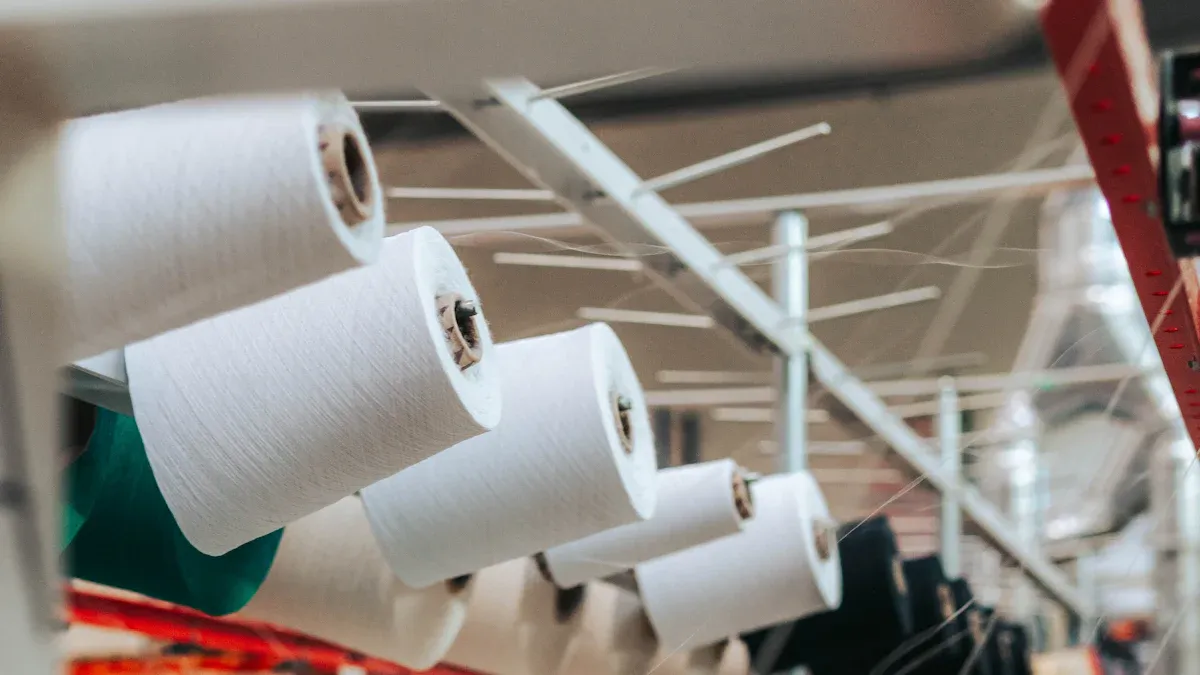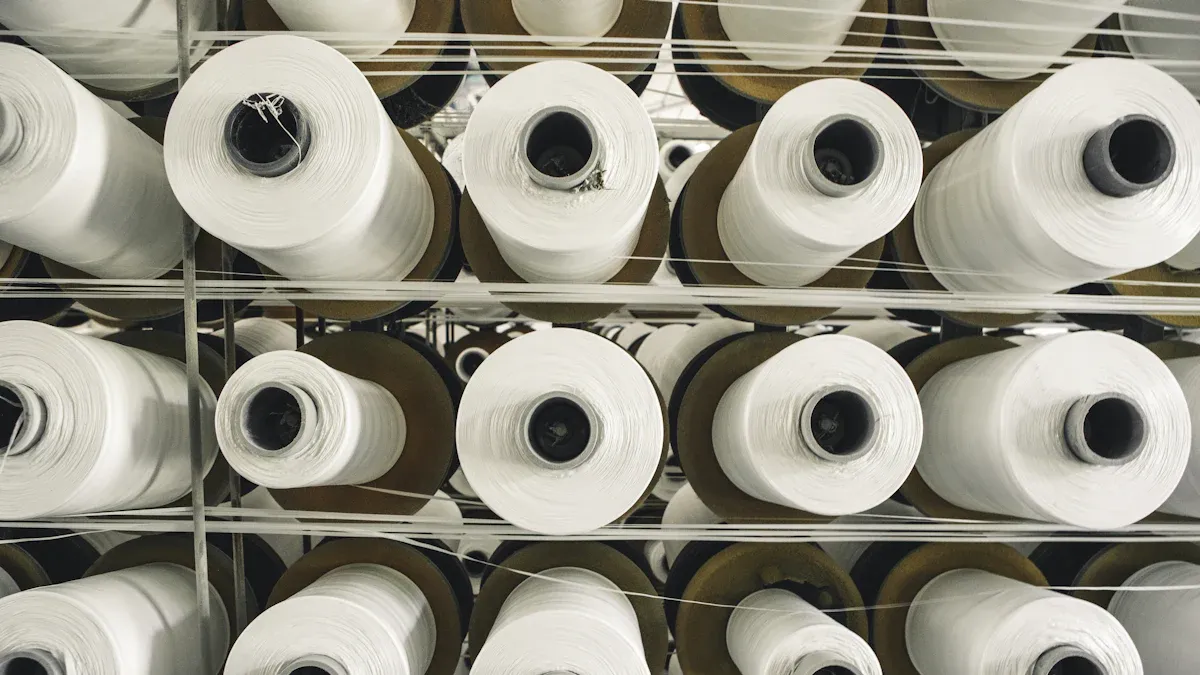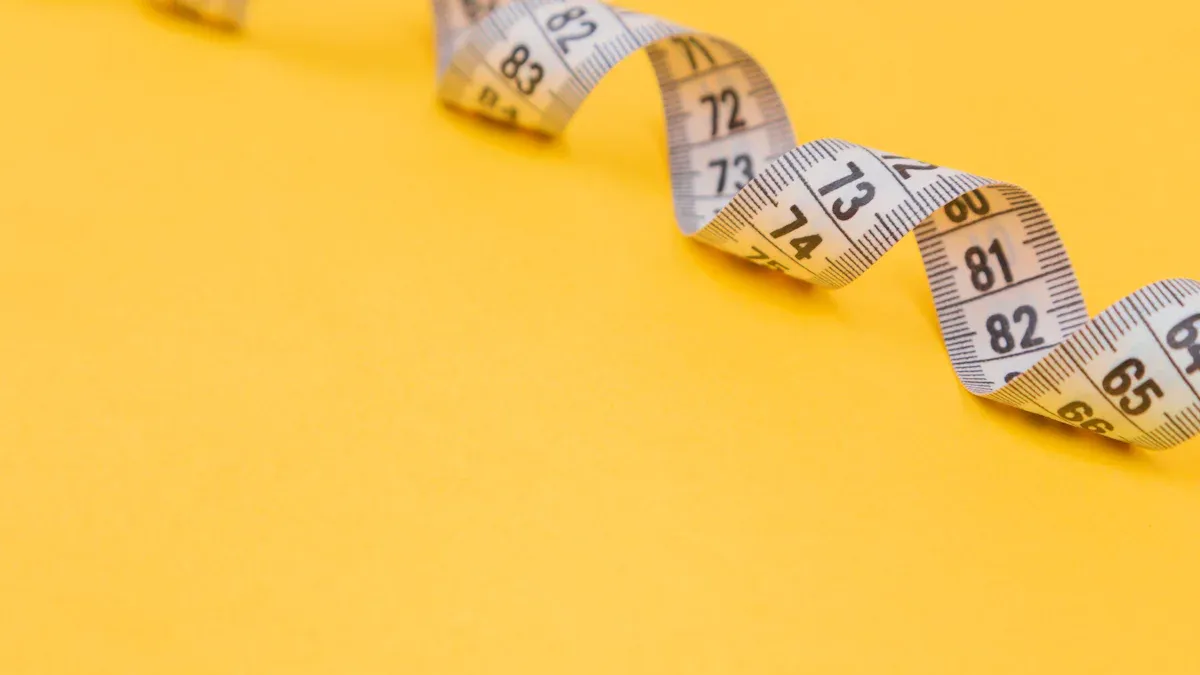close
Choose Your Site
Global
Social Media
Views: 0 Author: Site Editor Publish Time: 2025-07-14 Origin: Site

To find tissue parent roll weight, use this formula: Weight = (Length × Width × basis) / 1000. Getting the tissue parent roll weight and basis right helps stop problems like web breaks, wrinkles, and rejects in making paper.
Keeping tissue roll weight and basis the same helps your paper machines work well and cuts down on waste.
Watching tissue parent roll weight and length helps you find problems early.
Huaxin Global’s paper towel raw materials come from forests that are certified and go through tough paper and tissue tests. You can count on every parent roll to meet high standards for paper quality and being good for the environment.
Check roll diameter, width, GSM, and core size carefully to get the right tissue weight and length. Use the correct formulas to find tissue roll weight and always take away the core weight to get the real tissue amount. Balance tissue thickness and density to make paper that is soft, strong, and soaks up water well. This helps the paper meet quality rules. Keep tools and machines in good shape and teach workers to stop mistakes and keep the quality the same. Pick raw materials like bamboo pulp that are better for the environment and make the product worth more.

You need to pay close attention to the roll diameter and width when working with a tissue parent roll. These two measurements affect how much tissue you can produce and how well your machines run. The roll diameter tells you how large the tissue parent roll is from one side to the other. The roll width shows how wide the tissue parent roll is across its face. Both measurements help you plan the length and basis of the tissue you will get from each parent roll.
Here is a table showing standard industry values for tissue parent roll dimensions:
| Parameter | Typical Values / Industry Standard Range |
|---|---|
| Roll Diameter | 750-780 mm, up to 1150 ± 50 mm |
| Roll Width | 170-175 mm |
A larger roll diameter lets you wind more tissue onto the parent roll, which increases the length of tissue you can produce before changing rolls. However, if the roll diameter gets too big, you may see more breaks or wrinkles in the tissue. A smaller roll diameter can help prevent these problems but may require more frequent roll changes. The roll width determines how many tissue products you can cut from each tissue parent roll. If you use a wider roll, you can make more products at once, but you must check for quality and consistency.
Tip: Always match the roll diameter and width to your production line and product needs. This helps you get the best length, basis, and quality from each tissue parent roll.
GSM stands for grams per square meter and tells you the basis weight of paper in your tissue parent roll. The GSM, along with the density, affects how strong, soft, and absorbent your tissue will be. Most tissue parent rolls have a basis weight of paper between 13 and 40 gsm. For napkins, you often see a basis of 13 to 25 gsm. The density of the tissue parent roll shows how tightly the fibers are packed together. A higher density means the tissue is more compact, which can change the feel and performance of the tissue.
You must check both GSM and density to make sure your tissue parent roll meets your product standards. If you use a tissue paper parent roll with the right basis and density, you get a better balance of softness, strength, and absorbency. This also helps you control the weight and length of each tissue paper jumbo roll you produce.
The core size is the diameter of the tube inside the tissue parent roll. Most tissue parent reels use a core diameter of about 76 mm (3 inches). The core size matters because it takes up space inside the roll and adds to the total weight. When you do a calculation for the net weight of your tissue parent roll, you must subtract the core weight. A larger core size means less tissue can be wound onto the roll, which reduces the length and basis of tissue you get. A smaller core size lets you wind more tissue, increasing the length and net weight.
The outer diameter of roll, core size, and basis all work together in the calculation for the length and weight of your tissue parent roll. If you want to maximize material usage and reduce waste, choose the right core size for your tissue jumbo roll. This helps you get the most tissue from each parent roll and keeps your production efficient.
You need to know the exact weight of your tissue parent roll before you start production. This helps you plan how much tissue you can make and keeps your paper machines running smoothly. The most common way to calculate weight uses a simple formula:
Weight = (Length × Width × GSM) / 1000
This formula gives you the weight in kilograms. You need three things for this calculation: the length of the tissue in meters, the width of the roll in meters, and the GSM (grams per square meter), which is the basis weight of the paper. The GSM tells you how much one square meter of your tissue weighs.
You can also use another industry-accepted formula that treats the tissue parent roll as a cylinder. In this method, you use the density of the paper, the diameter of the roll, and the height (which is the width of the roll). The formula looks like this:
Weight = Density × π × (Diameter / 2)² × Height
This calculation helps you get a very accurate weight, especially if you know the density of your tissue paper parent roll.
Let’s look at a practical example calculation using Huaxin Global’s Paper Towel Raw Materials. Suppose you have a tissue parent roll with these values:
Length: 1800 meters
Width: 1.8 meters
GSM: 18
Core weight: 2 kg
First, use the formula:
Weight = (1800 × 1.8 × 18) / 1000 = 58.32 kg
This number gives you the gross weight of the tissue paper jumbo roll, including the core.
Tip: Always measure the length and width of your tissue parent roll carefully. Small mistakes in these numbers can lead to big errors in your calculation of weight.
You can also use the formula with density if you know it. For example, if the density of your paper is 0.5 g/cm³, the diameter of the roll is 1 meter, and the width is 1.8 meters, you can use the cylinder formula to check your result.
The core inside your tissue parent roll adds extra weight that you do not want to count as usable tissue. To find the net weight of tissue, you must subtract the core weight from the total. This step is very important for accurate roll weight calculation.
Here is how you do it:
Calculate the gross weight using the formula above.
Find the weight of the core (often printed on the core or provided by the supplier).
Subtract the core weight from the gross weight.
For the example calculation above:
Gross weight: 58.32 kg
Core weight: 2 kg
Net weight of tissue: 58.32 kg - 2 kg = 56.32 kg
This net weight tells you how much tissue you actually have for production. If you skip this step, you might overestimate the amount of tissue you can use, which can cause problems in your production planning.
Note: Always check the core size and weight before you start your calculation. Different core sizes can change the calculation of length of paper in a roll and affect your paper length calculation.
By following these steps, you make sure your calculation of weight is correct. This helps you control your tissue production, reduce waste, and keep your products consistent. When you use Huaxin Global’s high-quality paper towel raw materials, you get reliable results every time. The right calculation helps you get the best value from each tissue jumbo roll and supports your quality control process.

It is important to know the thickness and density of tissue parent rolls. These two things help decide how your tissue feels and works. They also affect how much water it can soak up. You must check and control both thickness and density to make sure your tissue is good for customers.
The thickness of tissue parent roll shows how soft and bulky the tissue is. Thicker tissue often feels softer and soaks up more water. If you make the paper thicker, it can hold more water and feel nicer. Studies show that thickness affects how soft and absorbent the tissue is. Embossing can make tissue thicker by adding raised shapes. This makes the tissue feel softer and bulkier. But too much embossing can make the tissue less strong and less soft on the surface.
You can measure thickness using ISO 12625-3:2014. This rule helps you get the same results every time. Here is how you measure thickness:
Put one layer of tissue under a weight of 2.0 kPa.
Use a tool with a set foot size and speed.
Measure the space between the top and bottom of the tissue.
For multi-ply tissue, stack sheets and measure the total thickness.
Find the packing density using the gram weight and thickness.
Check for dirt, dents, and water in the tissue.
Note: Always use the same tools and pressure each time. This keeps your thickness results correct and easy to repeat.
Here is an example of how to find thickness: If your tissue parent roll has a thickness of 0.12 mm per sheet and a GSM of 18, you can find the bulk by dividing thickness by GSM:
Bulk = Thickness (mm) / GSM (g/m²)
Bulk = 0.12 mm / 18 g/m² = 0.0067 mm·m²/g
This number lets you compare different tissues and pick the best mix of softness and strength.
Density shows how close the fibers are in your tissue. Density is important for how strong and tough your tissue is. If you use wide and thin fibers, they pack closer and make the tissue denser. This makes the tissue stronger but less soft and less able to soak up water. If you use thick, stiff fibers, the tissue stays bulkier and softer, but it may not be as strong.
You can use density to see if your tissue parent roll is right for your product. The formula for density is:
Density = GSM / Thickness (mm)
For example, if your tissue has a GSM of 18 and a thickness of 0.12 mm:
Density = 18 g/m² / 0.12 mm = 150 g/m²/mm
This number tells you how much material is in each millimeter of thickness. A higher density means the tissue is stronger and tougher, but it may not feel as soft. A lower density gives you a softer and bulkier tissue, but it might not be as strong.
Tip: Always try to balance density and thickness. This helps you make tissue that is soft, strong, and soaks up water well. Your customers will like tissue that feels good and works well.
GSM, thickness, and density all work together for every tissue parent roll. GSM tells you how heavy the paper is for each square meter. Thickness shows how bulky the tissue is. Density links these two and helps you control how the tissue feels and works. If you use the right way to find thickness and density, you can make tissue that is high quality and good for the environment.
If you follow these steps and use good raw materials like Huaxin Global’s, you can make sure every tissue parent roll works well for your production line.
You can stop many problems by measuring things right. If you measure thickness, weight, and roll size well, your paper stays good. Here are some easy ways to help:
Oil moving machine parts often so they do not wear out.
Clean and look at machine parts a lot to stop dirt from building up.
Make sure sensors and rollers are set right for good measurements.
Use the same way to measure and teach workers to do it the same.
Check your tools often so they do not break or give wrong numbers.
Use more than one tool to check thickness or weight for better results.
Look at each roll to see if it is even and has no problems before you start.
Tip: Train workers often and check tools to find mistakes early and keep making good tissue.
Keeping density the same helps you make better tissue. If density changes a lot, the roll can get too hard or too soft. This makes it hard to ship or use the tissue. You want the roll to be the same from the inside to the outside. This keeps the tissue strong and easy to use.
The winder changes density by using more or less pressure and tension.
If density goes up or down fast, the roll can lose its shape or fall apart.
Even density helps the tissue stay thick and strong.
Note: Always watch tension and pressure when winding to keep density the same.
Good quality checks help your tissue stay safe and work well. You should check every step, from the start to the end. Here are some important steps:
Get the pulp ready and clean to take out dirt.
Use safe bleach to make the paper bright and clean.
Add things to make the tissue strong and soft.
Make the paper sheet with the right water and thickness.
Press and cut shapes with the right amount of force.
Cut and fold the tissue to the right size.
Use UV-C light to keep the tissue safe.
Wrap rolls to protect them.
You should also test how much water the tissue can hold, how strong it is, and how bright it looks. Machines can find problems fast, and you can change settings to make better tissue. Checking often and using machines helps you make fewer bad rolls and keeps your tissue good.
Doing calculations the right way helps you make more paper with less waste. It also helps you keep your paper good and safe for the planet. When you measure paper weight and roll size carefully, you throw away less and your paper stays the same every time. Picking green paper sources, like bamboo pulp from Huaxin Global, is even better for the earth.
| Sustainability Factor | Virgin Wood Pulp | Bamboo Pulp (Huaxin Global) |
|---|---|---|
| Growth Cycle | 10–30 years | 2–3 years |
| Deforestation Footprint | High | Zero |
| Oxygen Production | Baseline | 35× more oxygen |
| Forest Land Conservation | None | Saves 0.5 m² per box |
| Energy Consumption | Baseline | 30% less energy |
| Antibacterial Properties | None | Natural “Bamboo Kun” |
| Certifications | FSC | FDA, EU Food Grade, Biodegradable |
| Environmental Impact | High | Lower, septic-safe |
Checking your paper often and using the best materials helps you reach top goals and care for nature.
You use a special tool to press on the tissue and check the space between the top and bottom. This method helps you get the right thickness for your paper every time.
GSM tells you how heavy one square meter of paper is. When you know the GSM, you can make sure your paper meets the right strength and softness for your customers.
You should keep the roll in a dry, cool place. This keeps the paper safe from moisture and dust. Good storage helps you keep the paper in top condition.
You can pull or stretch the paper to see if it tears easily. You can also test how much water it can hold. These tests help you make sure your paper works well for cleaning.
Most tissue paper is not good for recycling after use because it breaks down quickly. You can compost some types if they do not have chemicals or dyes.